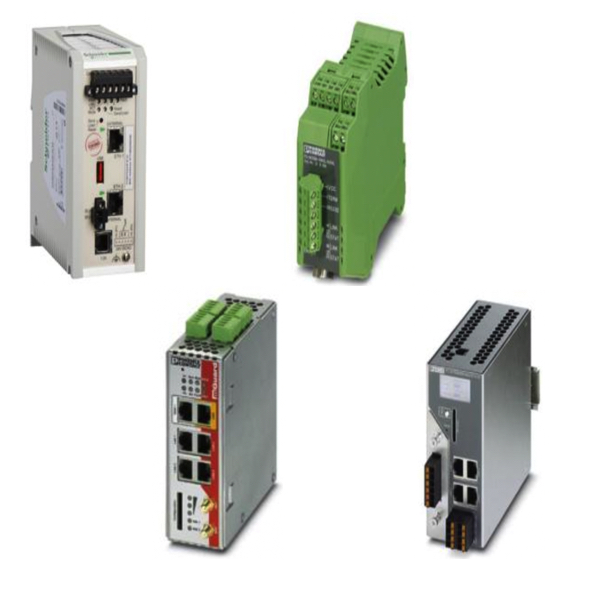Firewall Routers

Firewall routers play a critical role in protecting industrial networks that rely on internet and Ethernet connectivity for data transmission. These devices manage traffic between networks while filtering unauthorized or malicious data, helping reduce the risk of data theft, system disruption, or unauthorized access. In industrial environments, security must be built into every layer of the network to protect control systems and connected devices.
RSP Supply offers a wide selection of industrial firewall routers in both managed and unmanaged configurations. These devices combine routing, firewall protection, VPN functionality, and Layer 2 switching into a single, compact platform designed specifically for automation networks. Compared to software firewalls, industrial firewall routers provide centralized protection without the need for installation and maintenance on each individual device.
Managed firewall routers offer advanced configuration, monitoring, and traffic control features, making them well suited for complex networks that require segmentation, remote access control, and detailed diagnostics. Unmanaged firewall routers provide reliable, fixed-function protection for simpler applications where minimal setup is required. Both options are designed to maintain fast data transmission while protecting critical control networks.
FAQs
Q: What is an industrial firewall router?
An industrial firewall router is a network device that combines routing, firewall security, VPN capabilities, and switching functions to protect industrial automation and control networks.
Q: What is the difference between managed and unmanaged firewall routers?
Managed firewall routers allow configuration, monitoring, and customization of security and network settings. Unmanaged firewall routers operate with fixed settings and are designed for simpler applications that require basic protection without configuration.
Q: How do firewall routers improve network security?
Firewall routers inspect and filter data packets based on predefined rules, blocking unauthorized traffic while allowing approved communications between devices and networks.
Q: How do firewall routers compare to software firewalls?
Unlike software firewalls that must be installed and maintained on each computer, firewall routers provide centralized protection at the network level, reducing administrative effort and improving consistency.
Q: Are firewall routers suitable for industrial automation networks?
Yes, industrial firewall routers are specifically designed to withstand harsh environments while maintaining secure, reliable communication for control systems and automation equipment.
Why Buy Firewall Routers from RSP Supply
RSP Supply provides a reliable source for industrial firewall routers designed for automation and control network security. Our selection includes both managed and unmanaged solutions to support a wide range of network architectures and security requirements. Customers rely on RSP Supply for industrial-grade networking products, trusted manufacturers, and knowledgeable support to help protect critical systems and infrastructure.

